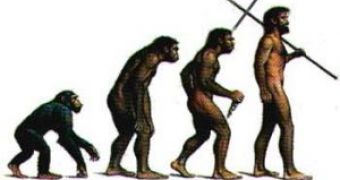Chimps and humans diverged 6 millions ago from a common ancestor.
A recent UCLA study proposed to see how genes separate us from our closest living relative.
"We share more than 95 % of our genetic blueprint with chimps," said Dr. Daniel Geschwind, and Gordon and Virginia MacDonald Distinguished Professor of Human Genetics at the David Geffen School of Medicine.
"During evolution, changes in some genes altered how the human brain functions," he added.
"Our research has identified an entirely new way to identify those genes in the small portion of our DNA that differs from the chimpanzee's."
UCLA team has identified entire networks of interconnected genes whose expression patterns were different in chimp and human brains.
"Genes don't operate in isolation - each functions within a system of related genes," said Michael Oldham, UCLA genetics researcher.
"If we examined each gene individually, it would be similar to reading every fifth word in a paragraph - you don't get to see how each word relates to the other. So instead we used a systems biology approach to study each gene within its context."
It appeared that gene networks corresponded to specific brain regions.
These gene networks differed most in the cerebral cortex, the most evolved brain region in mammals, related to intelligence, which is three times bigger in humans than chimps.
The team discovered that many genes playing a main role in cerebral cortex networks in humans did not in the chimpanzee and were significantly different between the two species.
"When we see alterations in a gene network that correspond to functional changes in the genome, it implies that these differences are very meaningful," said Oldham.
"This finding supports the theory that variations in the DNA sequence contributed to human evolution."
Data from DNA microarrays (vast collections of tiny DNA spots) lead to the activity mapping of almost every gene in the genome simultaneously.
Many of the gene networks correlated to cortex zones in humans are related to learning, brain cell activity and energy metabolism.
"If you view the brain as the body's engine, our findings suggest that the human brain fires like a 12-cylinder engine, while the chimp brain works more like a 6-cylinder engine," explained Geschwind.
"It's possible that our genes adapted to allow our brains to increase in size, operate at different speeds, metabolize energy faster and enhance connections between brain cells across different brain regions."
The researchers want to identify specific brain regions related to language, speech and other human skills.

 14 DAY TRIAL //
14 DAY TRIAL //